10 times in junior single-seaters where using a different points system would have changed a title outcome
Points systems are designed in motorsport to most accurately reflect and reward the performance of the competitors involved. Unlike other sports where the scoring mechanisms are enshrined so tightly into the rules that they will never be changed, the variety of categories and series within motorsport means each has its own system and they are tweaked or overhauled completely from time to time. With junior single-seaters, the series often follow the example that Formula 1 sets with its evolving points system, while usually adding additional point(s) for pole position.
Here are 10 significant occasions where using a points system from earlier or later in a series’ timeline would have led to a different driver being crowned champion – and what the implications could have been.
Esteban Guerrieri Indy Lights 2012
2012 system ?1 Vautier 461? ?2 Guerrieri 453? ?3 Yacaman 394
2020 system??1 Guerrieri 326? ?2 Vautier 320? ?3 Yacaman 273
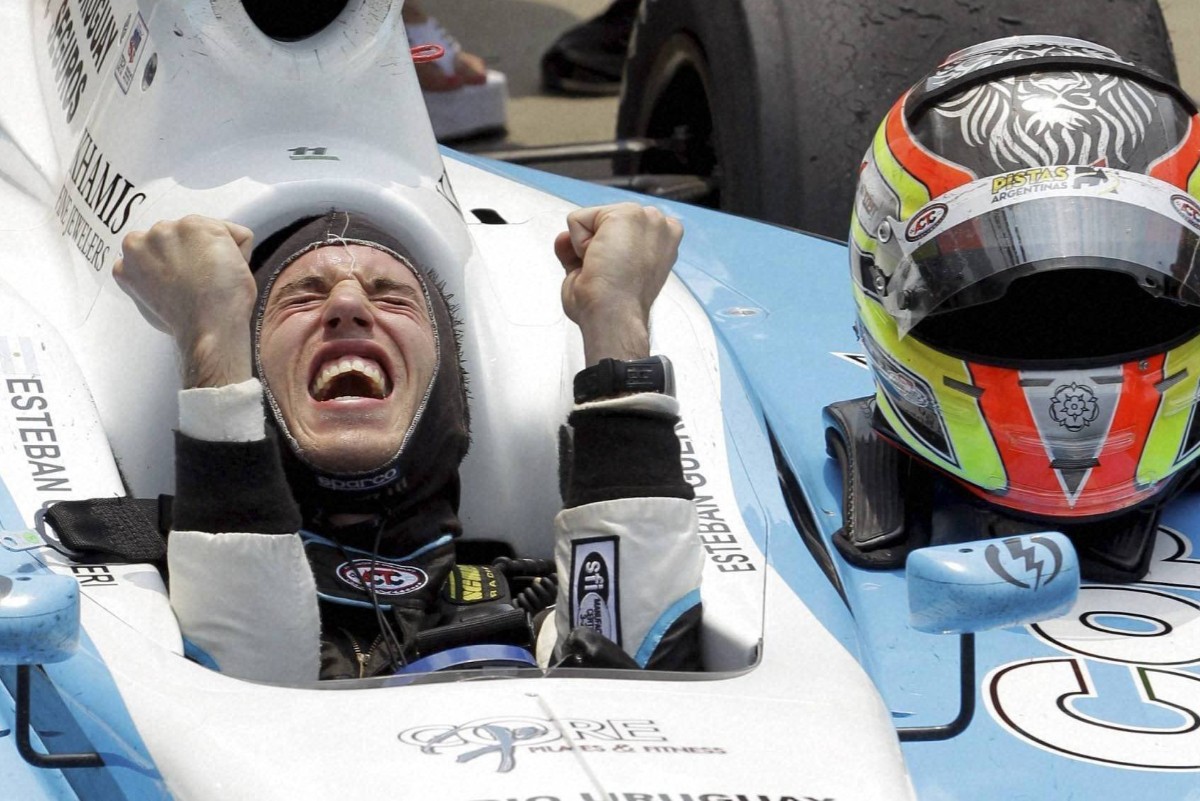
While some drivers moved on to success in Formula Renault 3.5 immediately after Formula Renault 2.0, it took five years for Eurocup champion Esteban Guerrieri to do so, then another two before he had a second, but not even full-time, chance.
His 2010 season was curtailed by poor luck and non-appearances, but six wins in the 12 races he was classified in put him third in the points. He switched his focus to America for 2011, as he lacked the budget for a Virgin Racing F1 seat on offer, and continued his junior single-seater career there in Indy Lights with Schmidt Peterson Motorsports.
After scoring three wins and finishing second in the points as a rookie he was signed to IndyCar team KV Racing Technology. Once again, the budget wasn’t there and he returned to SPM in Indy Lights.
After the first three races just three points covered Andretti Autosport’s Sebastian Saavedra and SPM’s Tristan Vautier and Esteban Guerrieri, who took his second win in the next race on Indianapolis Motor Speedway’s oval. Under the current Indy Lights points system, oval races score higher than their road and street-based counterparts (45 versus 30 points for a win), and Guerrieri’s best results through the remainder of the season were on the banked circuits.
Vautier won at the Milwaukee oval and the street races at Trois-Rivi?res and Baltimore, enough to win the title using 2012’s points system (50-40-35-32-30-28-26-24-22-20…) despite finishing outside of the top 10 in Toronto. Guerrieri never finished lower than seventh, which combined with his stronger oval form would have made him champion under the current system.
Guerrieri’s single-seater dream ended there and he returned to Argentina. That wouldn’t have been the case as champion, as he would have been guaranteed a part-time IndyCar seat without needing a budget. Who knows what he could have achieved.
Daniel Ricciardo Formula Renault 3.5 2010
2010 system ?1 Aleshin 138? ?2 Ricciardo 136? ?3 Guerrieri 123
2017 system??1 Ricciardo 217? ?2 Aleshin 215? ?3 Guerrieri 199
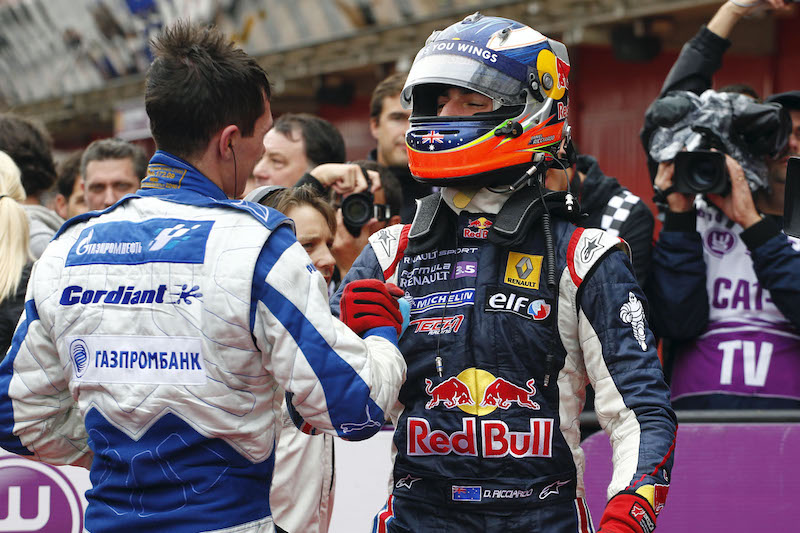
Failing to end a six year spell without a title above Formula 3 level for the Red Bull Junior Team ultimately put pay to an immediate F1 promotion for Daniel Ricciardo, who did a brilliant job to come two points short of the FR3.5 title as a rookie.
The Australian had won the FR2.0 West European Cup and British F3 titles in successive years, and after a two-race FR3.5 cameo in 2009 with Tech 1 Racing he joined the team full-time in 2010. He kicked proceedings off with two poles and the points lead, and took his first win in style on the streets of Monaco. His pace continued to pick up and he won at the Hungaroring, Hockenheim and Barcelona using the low-downforce aero trim specified in the second races of each weekend.
Guerrieri seemed to be the master of high-downforce running, and he won five times with the alternative aero. His absences meant Ricciardo’s rival was fourth-year racer Mikhail Aleshin, who won three times early on before relying on consistency. Their title fight went to a final race showdown, after Carlin had saved its driver Aleshin from a locked Barcelona circuit toilet.
Ricciardo dominated the first race by 26.221 seconds, putting him level on points with Aleshin for the title decider. He qualified second for it, three places ahead of his Russian rival, and held him off for 10 laps before a kick of oversteer on lap 20 of 22 meant he fell behind. That was all that was needed to sway the title balance, and being beaten by a driver who Red Bull had dropped at the end of 2009 wasn’t good enough for Ricciardo to be immediately promoted by Dr Helmut Marko to F1.
It was the final year FR3.5 used a 15-12-10-8-6… points system before switching to F1’s points format, and had it not delayed then Ricciardo would have been champion. Aleshin would’ve headed to Barcelona as leader by two points, and the balance would’ve switched to a five-point Ricciardo advantage after the dominant win. Not only was finishing one spot behind his rival fine in race two, but he could have also dropped another position and been champion on win countback.
Jules Bianchi Formula Renault 3.5 2012
2012 system ?1 Frijns 189? ?2 Bianchi 185? ?3 Bird 179
2006 system??1 Bianchi 131? ?2 Frijns 126? ?3 Bird 118
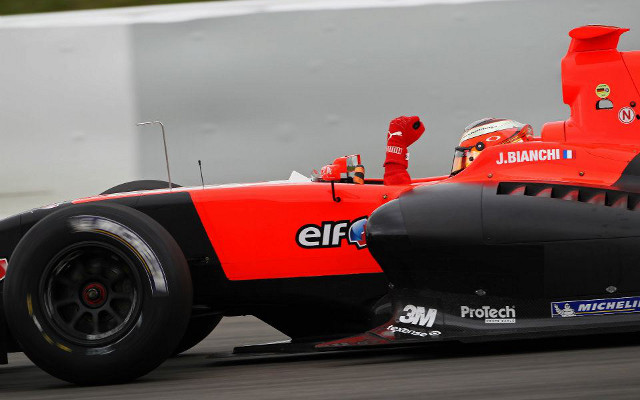
Photo: World Series by Renault
It took another two years for the first rookie FR3.5 champion since Robert Kubica in 2005, and it could have gone to any of three drivers. Reigning Eurocup champion Robin Frijns won it for Fortec Motorsports, just beating Tech 1’s Jules Bianchi and ISR’s Sam Bird.
Frijns and Bianchi both claimed three wins, while Bird won in Monaco and at home track Silverstone. For the third year in a row the title fight came down to the final race, and all three were in contention. Bird was 16 points behind going into the decider, which using FR3.5’s most common pre-2011 points format of 15-12-10-8-6… with one point each for pole and fastest lap would have actually been a larger gap of 17pts, just enough to keep him in the fight.
Bianchi headed to Barcelona five points ahead in reality, but under the older points system that gap would have doubled. As such, finishing seventh to Frijns’ third in race one (after a spin) would still have kept him ahead by five, and when he retired after they crashed while fighting over fourth in race two he would have been crowned champion, and potentially been promoted to a Force India F1 race seat for 2013. Had Frijns not been penalised for their clash and finished seventh, Bianchi would still have been champion by one point.
Back in 1999 another would-be FR3.5 champion didn’t have their way, as Portuguese talent Manuel Giao was beaten on dropped scores by Fernando Alonso. The 28-year-old won two races to Alonso’s six, and went from being two points ahead to seven behind after dropping two of his scores. Using the 2017 points system, Giao would have been champion by six points.
Martin Brundle British Formula 3 1983
1983 system ?1 Senna 132? ?2 Brundle 123? ?3 Jones 77
2014 system ?1 Brundle 360? ?2 Senna 336? ?3 Jones 250
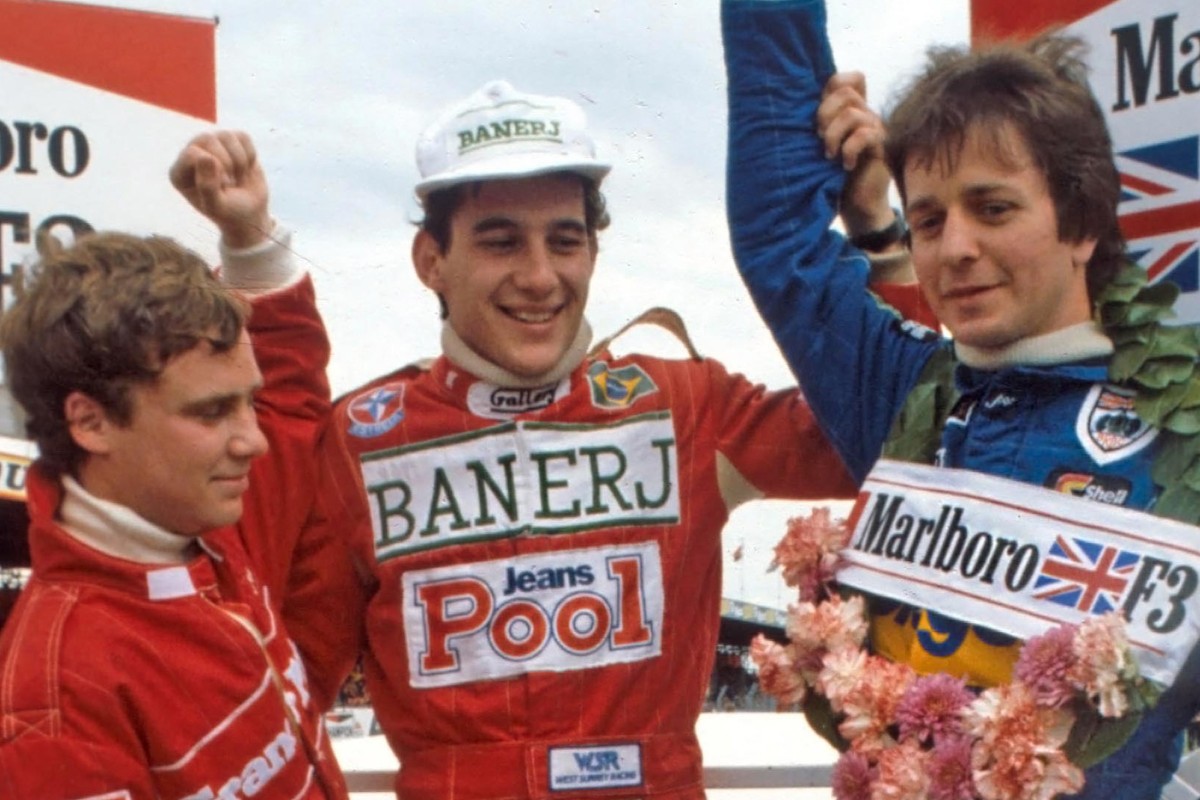
The closest Martin Brundle ever got to being a title contender in his lengthy single-seater career was the 1983 British F3 season, where the Eddie Jordan Racing driver faced off against West Surrey Racing’s Ayrton Senna.
The history books show Senna, once dropped scores were included, triumphing by nine points after the duo won 19 of the 20 races (or 18 when you count the Allen Berg-awarded Silverstone race where winner Brundle was ineligible for points due to using non-spec tyres). Senna took 12 of the triumphs for himself, which contributed 120 of his 132 points.
Brundle bagged six points-scoring wins, but was a far more consistent scorer and took 10 second place finishes to Senna’s two. Along with two third places, it mean his only non-score other than his Silverstone win was when he and Senna collided at Oulton Park.
Given the seven-point difference between first and second place in the 2014 point system, surely Senna’s tally of wins would have made him a more assertive champion? Not so. The relative value of a third place in 2014 was more than 1983 (60% of a win versus 40%), and Brundle made two appearances on the bottom step of the podium at Silverstone and Thruxton.
While he only moved into the points lead with three races to go under the new system, he would also be champion with a race to spare as Senna racked up six retirements. Unsurprisingly, both Brundle and Senna got offered F1 drives at the end of 1983.
Applying the points system in use at the championship’s demise would have also changed F3 title outcomes in Italy, including making Piercarlo Ghinzani and Enzo Coloni two-time champions. Ghinzani would have added the 1976 title, while Scuderia Coloni’s founder would have won in 1980. Claiming the 1977 title would be Oscar Pedersoli rather than Elio de Angelis.
Herm Johnson Indy Lights 1977
1977 system ?1 Bagley 500? ?2 Johnson 500? ?3 Holmes 340
2020 system ?1 Johnson 115? ?2 Bagley 108? ?3 Holmes 84

Johnson at the 1982 Indianapolis 500
Based around the winged-Formula Super Vee, the start of Indy Lights history kicked off with a four-round USAC-sanctioned series in 1977 that attracted 40 drivers.
Race one was at the ‘kidney bean-shaped’ Trenton Speedway oval, followed by Milwaukee, Canadian Tire Motorsport Park and Phoenix. With three ovals, the current points system would obviously favour drivers who fared better on left-handers.
However in 1977 there was no balancing, and due to the low number of races there ended up being two drivers on the same amount of points. Both Tom Bagley and Herm Johnson scored 500, and were declared co-champions.
Bagley took two wins to Johnson’s one, and to most series that would make him champion. Given it didn’t, and the revived Indy Lights’ points system has evolved significantly since, it’s worth reassessing the 1977 season.
Johnson retired at Trenton, while Bagley beat Howdy Holmes to victory from pole. Noel Bennett beat poleman Johnson at Milwaukee, with Bagley in fifth. Pole was wasted again by Johnson in Canada, and Bagley came through to beat William Henderson and Johnson. The only way Johnson could become co-champion at Phoenix was if he won, Bagley retired, and Bennett and Holmes finished seventh or lower. Bennett failing to race removed one rival, and Holmes only lasted 13 laps.
Bagley made it just past half-distance before also retiring, and Johnson held off Bill Alsup to win the race and share the title. Things would have gone a little differently using the 2020 system, especially as all starters score points, and Bagley’s 14-point lead going into the season finale would have been completely eradicated by the initially distant Johnson.
The 2010 Indy Lights title also changed hands under 2020 rules, with James Hinchcliffe beating Jean-Karl Vernay.
Richard Verschoor Toyota Racing Series 2018
2018 system? 1 Shwartzman 916? ?2 Verschoor 911? ?3 Armstrong 901
2020 system ?1 Verschoor 363? ?2 Shwartzman 363? ?3 Armstrong 353

Photo: Bruce Jenkins
After agonising title defeat in 2017, a similar fate was not in Richard Verschoor’s plan for his Toyota Racing Series return. But it was the same fate for the Dutchman, who’d just been dropped as a Red Bull junior, and he can absolutely pin the loss to a gearbox problem that put him out of race three at Ruapuna. Even the lowest of finishes would’ve made him champion.
Fast forward a year, and TRS changed its points system from 75-67-60-54-49-45-42-39-36-33-30-28-26 for all races to 35-31-27-24-22-20-18-16-14-12-10… for the two races with grids set from qualifying, and 20-18-16-14-12-10… for the reversed grid encounter. This would have made all the difference for unlucky Verschoor.
All six of Verschoor’s wins were in the ‘main’ races, with M2 Competition team-mates Robert Shwartzman and Marcus Armstrong only taking one win each in the higher-scoring contests. Armstrong’s other win came in a reversed grid race.
Finishing no lower than fifth originally propelled Shwartzman to the title by five points, but had the following year’s system been at play then he’d have sat level with his team-mate instead. It would then of course come down to who had the most wins, and Verschoor was an easy winner on that count. Armstrong didn’t gain or lose compared to his rivals, remaining 10 points behind.
Had Verschoor beaten both Ferrari juniors, maybe his fledgling F1 hopes would have been given a reprieve elsewhere.
Despite numerous close titles in TRS, on no other time would a different year’s points system have changed the outcome.
The previous time a title ‘Down Under’ could have changed hands was Australian Formula 2 in 1984, with Keith McClelland beating Peter Glover using the 2020 FIA F2 system, rather than finishing 1.5 points behind.
Jonathan Summerton Atlantics 2009
2009 system ?1 Edwards 182? ?2 Summerton 182? ?3 de Silvestro 176
2020 system ?1 Summerton 509? ?2 Edwards 505? ?3 de Silvestro 492

The men behind the doomed US F1 Team watched the 2009 Atlantics season with intent, as an all-American title fight ensued between 18-year-old John Edwards and 21-year-old Jonathan Summerton, with 20-year-old Swiss Simona de Silvestro not far behind. The team wanted an American driver for its debut F1 season, and Summerton was definitely in with a shot.
At first it was US RaceTronics’ de Silvestro who put the others in the shade, and she took the points lead in round three of 12. She then extended it to a whopping 26 points with three races to go, taking four wins and four poles on the way, before her title challenge collapsed by failing to meet the chequered flag twice in the remaining races.
A win was worth 20 points, and Summerton took two to Edwards’ one in the three races left. De Silvestro still led the points even after her car stopped on lap one of the Laguna Seca season finale, but as the race went on it was clear she was to lose.
Edwards beat Summerton to win that race, and jump from third in the points to win the title on second place countback against Summerton. It was a cruel defeat for the latter, and de Silvestro, and US F1 ended up opting for a different driver.
Had Atlantics’ current 50-42-37-34-31-29-27-25-23-21-19-17-15-13-11… system been at play, with three points for pole and two for fastest lap, then Summerton would have had his title and F1 deal. Unfortunately no such reprieve exists for de Silvestro, who would still be third in the points but did go on to race in IndyCar and Formula E.
There are three other examples of a new champion under the 2020 points system, with Jacques Villeneuve rising from third to become 1993 champion, future IndyCar star Richie Hearn winning in ’94, and Michael Valiante claiming the 2002 crown.
Victor Martins Formula Renault Eurocup 2019
2019 system? 1 Piastri 320? ?2 Martins 312.5? ?3 Smolyar 255
2009 system??1 Martins 206.5? ?2 Piastri 205? ?3 Smolyar 165
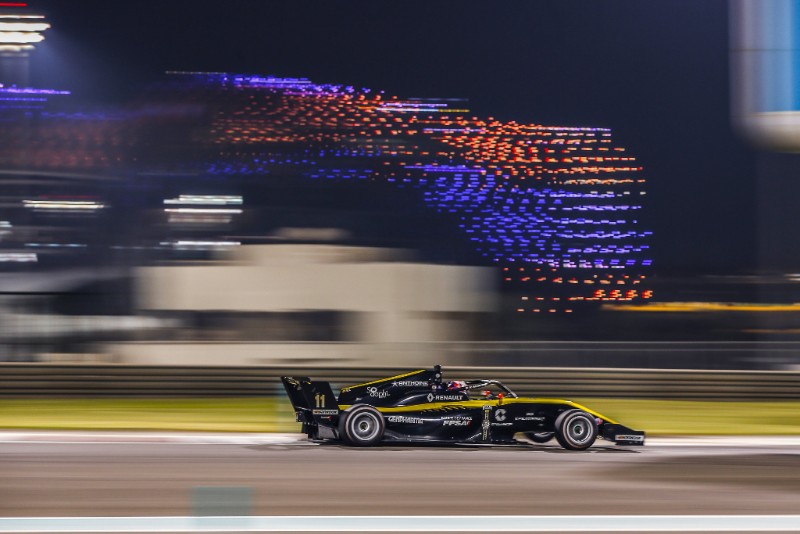
Photo: Renault Sport Series
It may be third time lucky for Victor Martins in the Formula Renault Eurocup this year with ART Grand Prix, but in a different world he would be racing in the FIA F3 Championship as a Renault junior instead.
The Frenchman lost his support from the manufacturer at the end of 2019 after he failed to win the Eurocup title in his sophomore season. He’d won two races and claimed fifth in the points as a Renault-backed rookie in 2018, and had already been given a reprieve to continue to race in its colours last year.
The Eurocup’s switch to regional F3 regulations meant Martins’ year of experience wasn’t that relevant, and he switched from champion team R-ace GP to MP Motorsport. Rival Oscar Piastri took his place at R-ace, and the pair embarked on a tit-for-tat title battle (which also dictated who would be a 2020 Renault junior) that was decided in the final race at Abu Dhabi.
Both had their share of bad luck, including races they didn’t even get to start, and also had weekends where their team had a clear competitive advantage over the rest. At Abu Dhabi it came down to individual brilliance from both, but a fluffed start from pole for Martins in race one made his day difficult and he had to live with an extended Piastri lead as the Australian won.
Martins didn’t waste his pole spot in the decider, and even used some slowing tactics at the start to make it tougher for Piastri. A comfortable sixth win of the season wasn’t enough to become champion, with seven-time winner Piastri being crowned in fourth place. Under the old system that FR3.5 used, but with the only additional point being for pole, Martins would be smiling instead. He had nine poles to Piastri’s five, equating to a 1.5 point lead come the end of the season.
Heinz-Harald Frentzen German Formula 3 1989
1989 system ?1 Wendlinger 164? ?2 Frentzen 163? ?3 Schumacher 163
2014 system??1 Frentzen 166? ?2 Schumacher 163? ?3 Wendlinger 162

The German Motorsport Federation had its money on two talents in the 1989 German F3 field, and reportedly put a F1 test on the line for the pair. Due to dropped scores, both were beaten by Helmut Marko’s driver – a frequently told tale over the next three decades – and it was the highly-rated Michael Schumacher who had to stay in F3 for another year.
After a spell of strong form by Michael Bartels (Bongers Motorsport) and Schumacher (WTS Racing), victories were mostly fought out between RSM Marko driver Karl Wendlinger and Schuebel Rennsport’s Heinz-Harald Frentzen. Out of DMSB juniors Frentzen and Schumacher it was the latter to take a win first, doing so in a straight battle at the Red Bull Ring.
Frentzen then won two on the trot, coming just a second short at Hockenheim of making it four in a row as Wendlinger took a follow-up success to his AVUS win. With two races to go, Schumacher and Bartels were distant title contenders and Frentzen led Wendlinger by one point. One race later and Frentzen was now the outsider after Schumacher claimed victory.
The three-way showdown took place on Hockenheim’s Short circuit, and this time Frentzen was two seconds short of the win needed to be champion. A distant third for Schumacher wasn’t good enough for him either, but 14th for Wendlinger was given he’d missed a race and only needed to drop one points-scoring finish.
German F3’s last points system was very different, and would have left Frentzen three points ahead of Schumacher and four ahead of Wendlinger in the standings. Being champion may even have prevented Frentzen losing his girlfriend Corinna to his rival…
The same system would make Manfred Mohr a two-time champion and Bertram Schafer a three-time champ, given Wolfgang Klein the 1980 title and made Franz Konrad the ’81 rather than ’83 champion, with Hans-Peter Pandur inheriting that success.
Thierry Boutsen FIA European Formula 3 1980
1980 system ?1 Alboreto 60? ?2 Boutsen 54? ?3 Fabi 50
2018 system ?1 Boutsen 349? ?2 Alboreto 340? ?3 Fabi 303
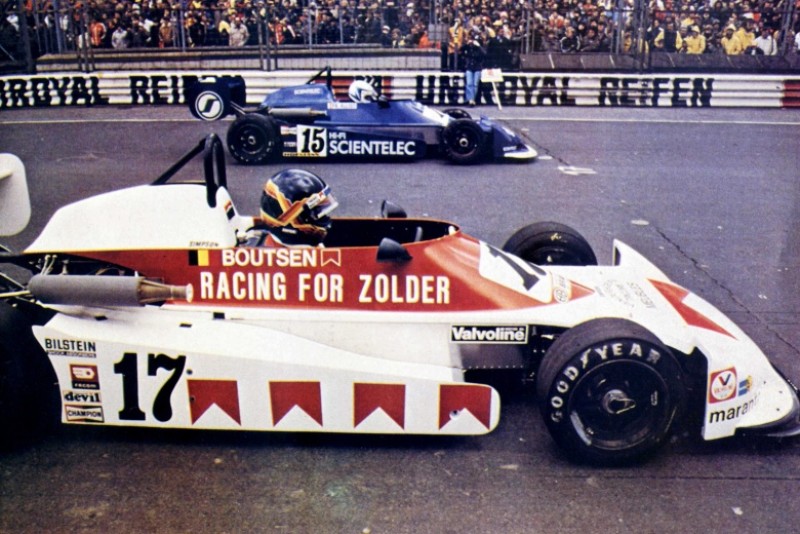
In both eras of the FIA European F3 championship, there were a lot of drivers and a lot of races. And not all counted for points. The points system only rewarded the top six from 1975 – ’84, so consistency – even over 16-rounds – could go unrewarded.
Importing the top 10-focused system from the 2012 – ’18 era of the championship makes the biggest change to 1980’s season: Euroracing’s Michele Alboreto would have a six-point margin overhauled by Oreca/Martini’s Thierry Boutsen.
Boutsen started the season by pipping team-mate Philippe Alliot to victory on the Nurburgring Nordschleife, then won six of his next eight races. After that he had only five podiums in his next 15 races, most of which came in the non-scoring heats.
Alboreto won five times, four of which counted for points. In total, only three of Boutsen’s did and that’s what cost him. In a reimagined series Boutsen would be champion by nine points from Alboreto and 46 points from Euroracing’s four-time race winner Corrado Fabi. Boutsen’s team-mate Mauro Baldi was not far behind on five wins, with Alliot completing the top five.
The era’s two greatest drivers never to make it to F1 would also be rewarded more appropriately. In 1978, Anders Olofsson lost the title on second place countback to Jan Lammers. Now, he would a clear champion by some 31 points. Five years later, Pierluigi Martini beat John Nielsen with a rapid second half to the season that put him in the points lead for the first time after the final race. Under different rules, Nielsen would have remained top by 14 points.
The last time an F3 driver would be ruing not having a modern points system would be 2009, when Drivex School’s Celso Miguez lost the Euroformula title by two points to Campos Racing’s Bruno Mendez. Today’s system would crown him by nine.